Search Images
Browse Content (p. 1103)

Image
Rome: A History in Seven Sackings
Rome: A History in Seven Sackings by Matthew Kneale.

Image
Temple Church, London
Temple Church, built in the City of London in the 12th century, was used by the Knights Templar as their headquarters and treasury. Famous for its effigies, it has been featured prominently in popular culture.
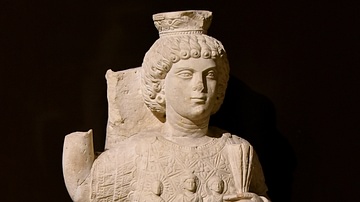
Image
Statue Dedicated to Jupiter Heliopolitanus
This limestone statue was dedicated to Jupiter Heliopolitanus by Sextus Proculus, the commander of the 2nd cohort. Roman Period, 2nd century CE. From Sukhne, northeast of Palmyra, in modern-day Syria. (Museum of Archaeology, Istanbul, Turkey...
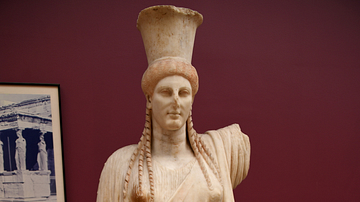
Image
Archaistic Caryatid from Tralles
Statue in the form of a Caryatid in the Archaistic Style shows a standing woman. The right arm hangs by her side and holds her himation. The left arm is raised (the distal part is now lost) as if she intends to carry the load of an architrave...
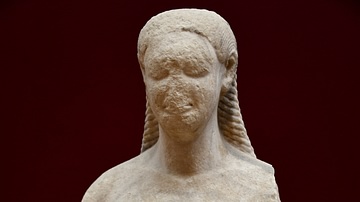
Image
Statue of a Greek Youth
This standing Greek youth is nude and his left thigh (the leg is lost) appears to advance forward. The neck and shoulders are smoothly modeled. His hair is plaited and falls behind the head. Many similar statues (or head of these statues...
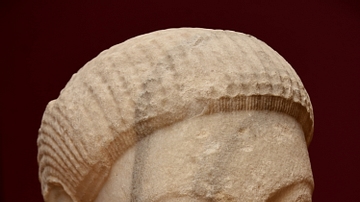
Image
Head of a Greek Youth
This is the head of a statue of a Greek youth or Kouros. The rest of the body is in the Samos Museum; the whole statue would measure about 3.2 meters in height. His hair is plaited and falls behind the head, down to the neck. The depiction...
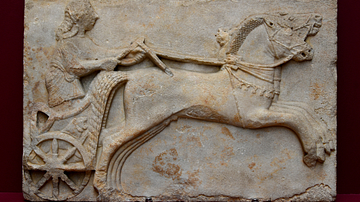
Image
Relief of a Charioteer from Cyzicus
This chariot is driven by a pair of horses. The horses' mane and tail are plaited, and there are tassels around their neck (within the trappings). The chariot has 8-spoked wheels and the carriage is decorated with a lion's relief. The standing...
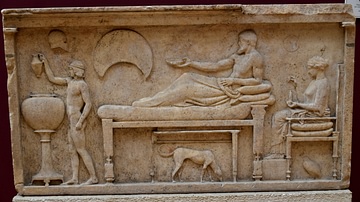
Image
Funerary Stele Showing a Banquet Scene from Thasos
This marble funerary stela depicts a banquet scene. The deceased is shown at the center of the stele. He reclining on a couch. His right arm is raised, expecting a wine cup, which is being filled by a young boy standing on the left side...
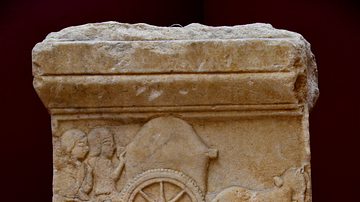
Image
Funerary Stele from Dascylium
This is the upper part of a long and narrow stele depicting a funerary cortege in two scenes. In the upper scene, two mourning women walk behind a funeral cart. In the lower scene, a woman and a bearded man sit on a couch. The woman's left...
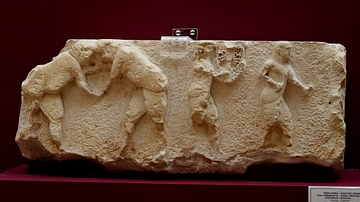
Image
Limestone Block Showing Wrestlers and Musicians from Xanthos
On the left, two men are wrestling while on the right there are two musicians; the musician on the left seems to play the lyre. Archaic Period, late 6th century BCE. From Xanthos, Kınık, in modern-day Turkey. (Museum of Archaeology, Istanbul...